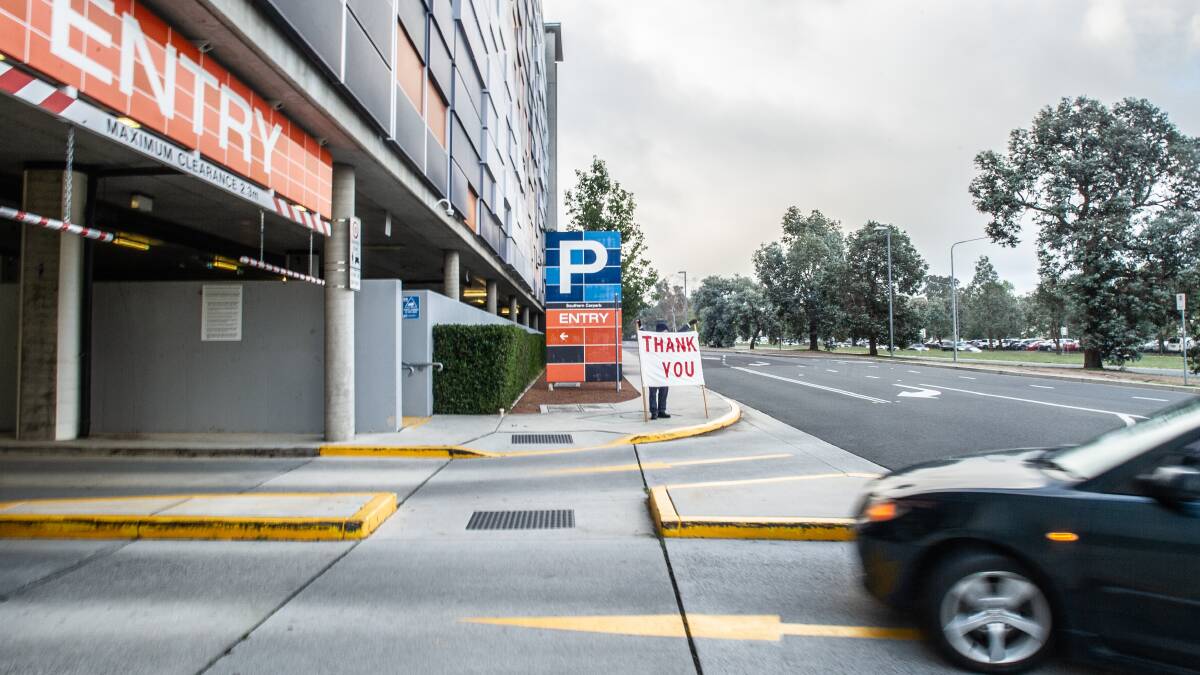
Canberra Hospital's switchboard was flooded with hundreds of calls from anti-vax protesters in a bizarre move because one of their group was receiving psychiatric treatment.
The disruptive wave of phone calls stopped after anti-vax activists realised the man they thought had been kidnapped by mysterious authorities was in fact in hospital because of a "manic episode".
On Monday, the hospital switchboard was overwhelmed by more than a thousand calls - coming in at more than a hundred an hour - from anti-vaxxers protesting that one of their number had been, as they put it on their chat sites, "nabbed".
The calls kept swamping the hospital switchboard until just after midnight and then stopped, according to people familiar with what was happening.
Anti-vaxxer chat rooms then started discussing how the activist they had previously thought was under compulsory detention was in fact in hospital after a "manic episode", as one anti-vaxxer put it.
The patient, the bulletin from the anti-vaxxer said, "is not in prison. He has been moved to the high dependency ward at the back of the hospital where it is quieter".
"I did speak to a lady," he continued, "that was trying to help him before he went (sic) the hospital and it is clear (he) was having what can only be described as a manic episode. Keep praying for him."
The patient (whom we have decided not to name publicly) is one of the most prominent anti-vax campaigners. In videos, he propounds a series of incredible and bizarre theories about the "scamdemic".
On Monday, hospital staff were exasperated at what a spokesman called "an extremely high volume of calls to our switchboard" which was "impacting on our ability to respond to urgent calls".
There were fears that the protest meant that some doctors might be prevented from communicating essential, life-saving information. Members of the public may also have been frustrated because they couldn't get through.
Before anti-vaxxers realised that their conspiracist comrade was actually in hospital voluntarily to be treated, they said that he had been "nabbed".
"They drugged him. They can kill him," one of the sites on the Telegram social media platform continued.
Some of the online conversation appeared incoherent, even deranged.
"Call the hospital. Don't listen to any provocateurs," the anti-vax clarion call said. "This is our chance to change the government."
"It's a tactic they use," the activist said, without specifying who "they" are. "They label someone a fixated person and they snatch them up and put them in a psyche ward and forcibly drug them. The only way we found to get them released is to inundate them with phone calls."
By Tuesday, the line had changed: "Everyone needs to stop calling the hospital because now they are very aware that many are watching and are aware."
The chief executive of Canberra Health Services, Dave Peffer, said the calls had been "disruptive: "The switchboard plays a critical role in the provision of care where we have teams that are rostered 24 hours a day, seven days a week, and so being able to contact the right specialist, the right clinician across the health service is absolutely important."
It was also disruptive for people who wanted to contact friends and family of patients, "so to have thousands of calls flooding in does cause a level of disruption that does impact the care that we provide, it is disappointing".







